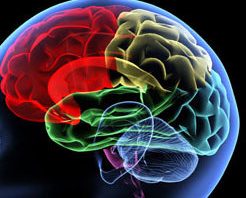Neurodegenerative diseases such as Alzheimer’s disease (AD), Parkinson’s disease (PD) and Amyotrophic lateral sclerosis (ALS) are a scary thought for many people as they have either experienced one of these diseases personally or know someone that has been affected. The thought of losing cognitive and memory function or having difficulties performing basic motor skills is absolutely horrifying, especially due to the fact that scientists are yet to develop a definite cure to these common neurodegenerative diseases that affect our society. In the paper “Pathological roles of MAPK signaling pathways in human diseases”, that we read and analyzed this week in our neurochemistry class, scientists are looking at a possible cell-signaling pathway that could shed light on a possible cure to these devastating diseases.
The basis of these three common neurodegenerative diseases involves either cell death or loss of neurons that leads to the symptoms that are developed from these diseases. Scientists have recently identified a few different cell-signaling pathways that could be involved in the development of these diseases. The first pathway that was identified is known as the Mitogen-activated protein kinase, or MAPK pathway. This pathway is associated with a number of different cellular activities that include cell proliferation, differentiation, survival, death and transformation. Other pathways in the body that were explored in this paper include the p38, JNK and ERK pathways, all of which are responsible for different cellular responses in the body.
Alzheimer’s disease is the most common neurodegenerative disease seen in our society today. In this disease, the MAPK pathway is triggered by oxidative stress and is responsible for neuronal apoptosis, ultimately causing AD. Oxidative stress is simply an event that is triggered by certain reactive oxygen species such as the hydroxyl radical, superoxide anion or hydrogen peroxide. Parkinson’s disease, the second most common neurodegenerative disease is also caused by oxidative stress. In PD, oxidative stress activates the p38, ERK, and JNK pathways, ultimately activating the MAPK pathway causing an increase in neuronal apoptosis as well. ALS is also caused by the activation of the p38 MAPK pathways resulting in a loss of motor neurons causing muscle atrophy. The fact that all of these pathways are seen in the progression of these neurodegenerative diseases it is a very important that scientists target them when looking for a cure.
You might be wondering, if scientists know what pathways are present in the development of these neurodegenerative disorders, why haven’t they already developed a cure? Although there are different inhibitors to these pathways that can be used to slow the progression of these diseases, it is very difficult to inhibit a certain pathway without it having many other effects in the body, as these pathways are responsible for so many other cell responses in the body and it’s almost certain that by inhibiting these pathways, many negative side-effects will also be present.
Now that scientists have been able to determine that these complicated cell-signaling pathways are involved in the pathogenesis of these neurodegenerative diseases, they have a very promising target when trying to develop a cure for these diseases. It will be very interesting to watch the progression as scientists attempt to find a cure for these very scary neurodegenerative diseases.
Will the MAPK pathway lead scientists to a cure for many common neurodegenerative diseases?

Peroxynitrite is the key oxidant in Alzheimer’s disease, and likely in many other neurodegenerative disease. Peroxynitrites increase MAPK activity and this may play a role in cellular death in Alzheimer’s disease (Saeki, Involvement of mitogen-activated protein kinase in peroxynitrite-induced cell death in human neuroblastoma SH-SY5Y cells). Peroxynitrites also nitrate NMDA receptors causing the influx of calcium and the efflux of glutamate both of which also kill brain cells. They also oxidate receptors involved in short-term memory (muscarinic acetylcholine), sleep (melatonin), mood (serotonin and opioid), awareness (dopamine), smell (olfactory) and brain growth (adrenergic).
The pathway to the formation of peroxynitrites is the following: phospholipase C (gamma or beta)…protein kinase C activation…increased superoxide anion and inducible nitric oxide production…peroxynitrites. Phospholipase C can be inhibited by various phenolic compounds (in some fruits, vegetables, herbal teas, spices, and essential oils among others) and polyunsaturated fats (such as fish oil) can impeded the activity of phospholipase C gamma and beta (Cole, Prevention of Alzheimer’s disease: Omega 3-fatty acids and phenolic antioxidant interventions).
The best means to treat Alzheimer’s disease is with methyoxyphenols because they are excellent hydrogen donors which allows them to detoxify peroxynitrites and to partially reverse their oxidative (and perhaps nitrative) damage. Several methoxyphenols (eugenol in rosemary essential oil via aromatherapy, and ferulic acid, coumaric acid, syringic acid, and vanillic acid in heat-processed ginseng) have led to significant improvements in cognitive function in patients with moderate to moderately severe Alzheimer’s disease:
Jimbo, et al. Effect of aromatherapy on patients with Alzheimer’s disease.
Heo, et al. Heat-processed ginseng enhances the cognitive function in patients with moderately severe Alzheimer’s disease.
Impede the activation and activity of phospholipase C and you can at least delay the onset of Alzheimer’s disease. Scavenge (detoxify) and repair part of the damage done by peroxynitrites and you can at least partially treat Alzheimer’s disease.
cool even though i didn’t read it
Just wish to say your article is as astounding. The clarity in your post is just cool and i could assume you are an expert on this subject. Well with your permission allow me to grab your RSS feed to keep updated with forthcoming post. Thanks a million and please carry on the rewarding work.